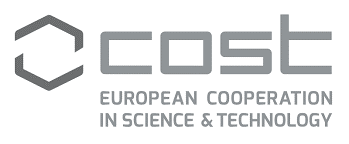RUDN University represented by the Institute of Applied Mathematics and Telecommunications (IAMT) has joined the new COST project “Intelligence-Enabling Radio Communications for Seamless Inclusive Interactions (IRACON)
 January 2018 is the date when RUDN has become a member of one of the leading international scientific programs sponsored by the European Community - the COST (European Cooperation in Science & Technology) program,. The pan-European COST project is part of the Horizon 2020 program and is focused on supporting collaborative research by scientists from different universities and countries. The participation of Russian universities in COST is a unique and extremely rare event, and this opportunity was provided by RUDN University thanks to the scientific achievements of IAMT RUDN.
January 2018 is the date when RUDN has become a member of one of the leading international scientific programs sponsored by the European Community - the COST (European Cooperation in Science & Technology) program,. The pan-European COST project is part of the Horizon 2020 program and is focused on supporting collaborative research by scientists from different universities and countries. The participation of Russian universities in COST is a unique and extremely rare event, and this opportunity was provided by RUDN University thanks to the scientific achievements of IAMT RUDN.
RUDNis already an institutional member of one of the COST projects, the so-called COST CA15104 Action project “Inclusive Radio Communication Networks for 5G and Beyond (IRACON)”. The objectives of the project are the introduction of new methods for the design and analysis of wireless networks of generations 5G and above. According to the agenda of the project RUDN University has an honor to host in October 2019
the VIII International Youth School - COST IRACON Training School on Network Models, Architectures and Applications for 5G (COST IRACON Training), continuing the series of schools that were previously held in Germany, Belgium, Portugal, Great Britain , France, Spain, Italy.
Matilda Pavlovna Mityaeva was born in 1925. In November 1942, she volunteered for frontline duty. She participated in the Great Patriotic War from November 1942 to June 1945 as part of the 53rd Infantry Division of the 475th Infantry Regiment. She was wounded twice.
The team led by Sergey Zyryanov, Head of the Department of General and Clinical Pharmacology, became the winner of the All-Russian competition of scientific projects "Technologies for Human Health".
RUDN University constantly adapts to the changes of the modern world and responds to challenges flexibly. This allows us to keep the standard of a world-class research university. The sphere of science is no exception. Peter Dokukin, Head of the Research Division, presented the updated R&D Programme at the meeting of the RUDN University Academic Council.
Matilda Pavlovna Mityaeva was born in 1925. In November 1942, she volunteered for frontline duty. She participated in the Great Patriotic War from November 1942 to June 1945 as part of the 53rd Infantry Division of the 475th Infantry Regiment. She was wounded twice.
The team led by Sergey Zyryanov, Head of the Department of General and Clinical Pharmacology, became the winner of the All-Russian competition of scientific projects "Technologies for Human Health".
RUDN University constantly adapts to the changes of the modern world and responds to challenges flexibly. This allows us to keep the standard of a world-class research university. The sphere of science is no exception. Peter Dokukin, Head of the Research Division, presented the updated R&D Programme at the meeting of the RUDN University Academic Council.